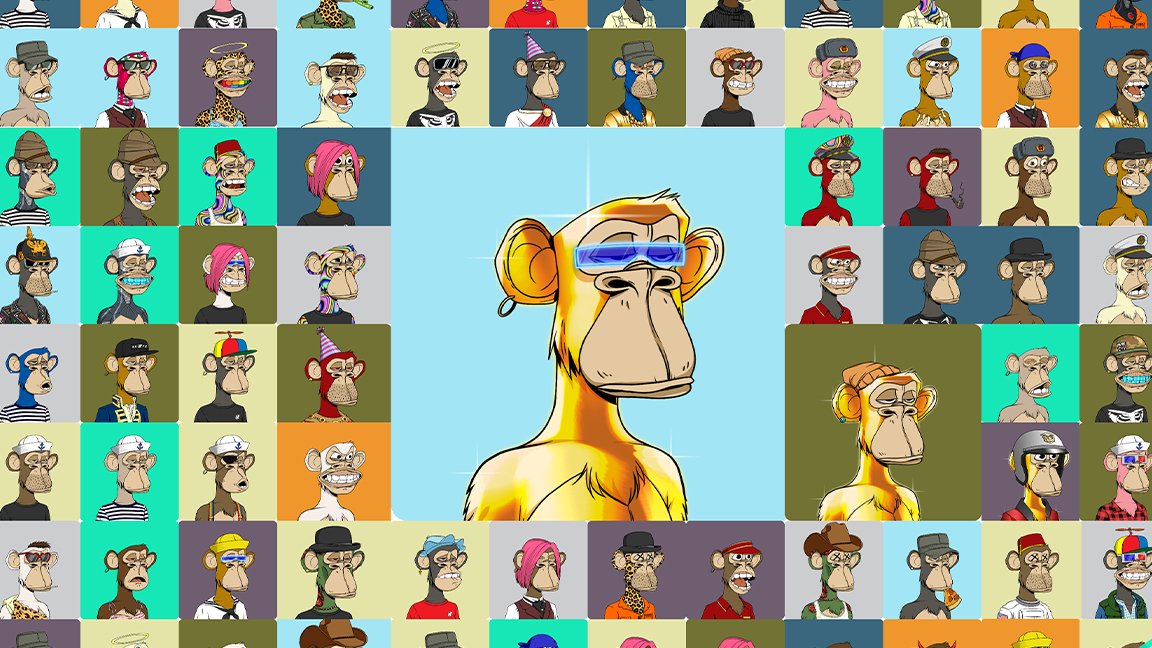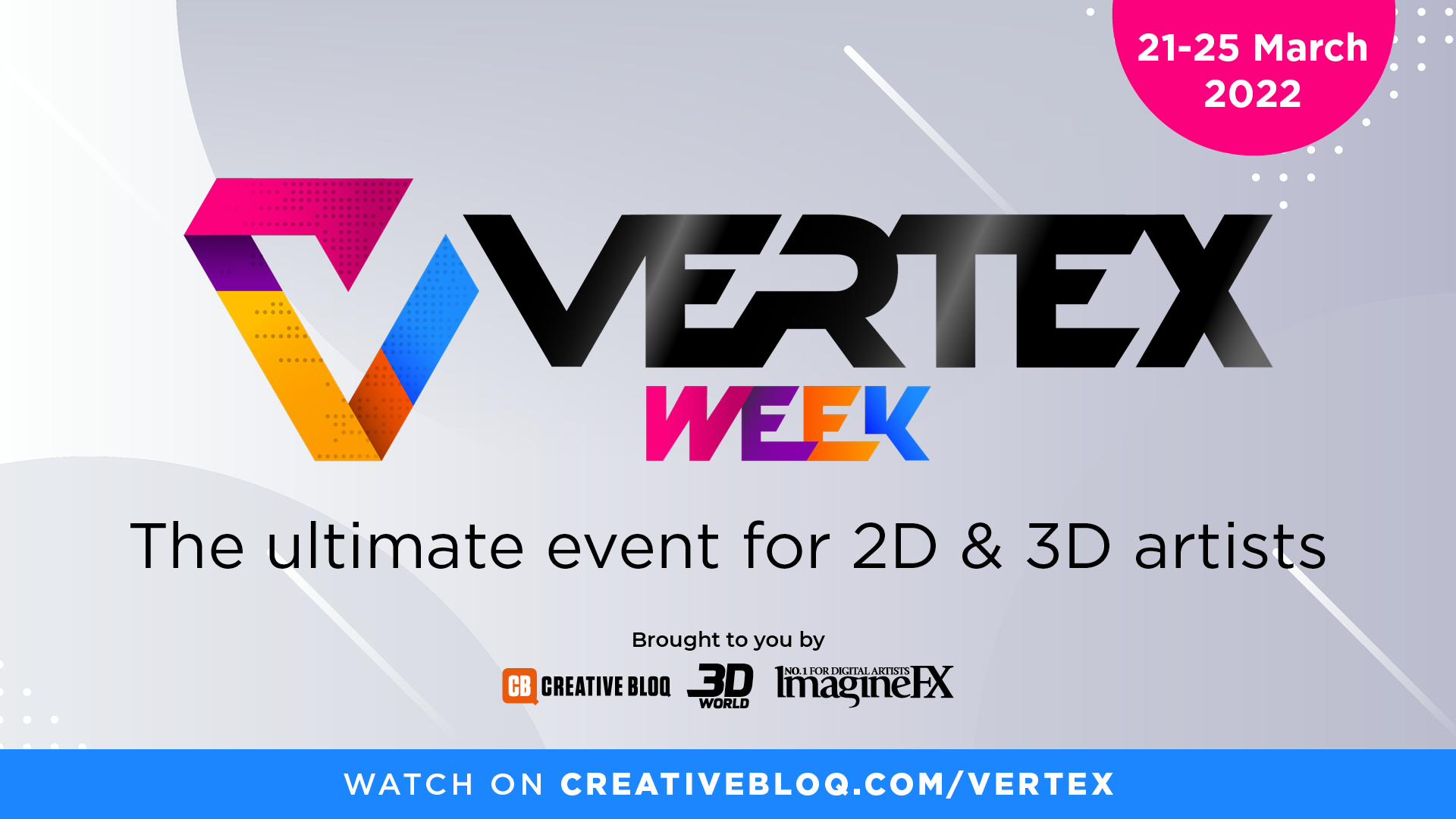
An NFT drop is something you're going to see a lot of in your new life as an NFT creator and collector. Understanding what an NFT drop is will help you to make the most of a new opportunity and arm you with the knowledge of how to avoid a scam or avoid making bad decisions.
If you want to know more about what are NFTs or learn how to make and sell an NFT, we have you covered. But here we'll share what an NFT drop is, and enable you to make more sense of this new art form.
Below you'll find some common sense tips to finding new NFTs and advice on how to keep yourself safe when searching for new NFT art. It's easy to get sucked into trends and hype, so reference some of our advice to keep a clear head and have fun. Ultimately, pick NFTs that appeal to use – after all, this is art.

Want to know more about NFTs? Don’t miss Vertex Week 2022, the ultimate virtual event for the digital art community. Bored Ape Yacht Club and Stereoheadz founder Jace Kay will be discussing NFTs, music and the metaverse, while Disney artist Chris Petrocchi will share how to promote your NFT art.
Disclaimer: The opinions expressed in the article are for general informational purposes only and are not intended to provide specific financial or investment advice or recommendations for any individual for any investment product. The article is only intended to provide general information and opinions about NFT marketplaces. The views reflected in this article are subject to change at any time without notice.

What is an NFT drop?
Put simply, an NFT drop is the release of a non-fungible token but the term 'drop' sheds light on the exact time and date the NFT minting will happen. NFT drops will often offer White Lists to get in early, such as how painter Mary Grant shared her LittlePainting365 2021 project with the community.
Getting in on an NFT drop the moment it happens means you are likely to get your NFT cheaper, as you're in first before the value – hopefully – soars. NFT drops usually have purchase limits and a limit to how many NFTs will be minted.
As more artists and brands get into NFTs you begin seeing and hearing about more and more NFT drops. It can cause anxiety to think you're missing out on something, the next Bored Ape Yacht Club or CryptoPunk collection. But this is when you can make a mistake, be taken in by a scam or end up buying an NFT you don't like. There are some rules to follow to help…
01. Know your NFT drop types

NFT drops come in many forms. The most common NFT drop enables an artist to mint an NFT collection and offer them on a first come, first serve basis. When they're gone, they're gone. Many creators will place limits on how many of their NFTs one wallet owner can buy.
Open Edition drops means an artist will mint as many NFTs of a collection as they can within a set time period. When the time ends the final number is how many NFTs that collection will feature.
Daily design news, reviews, how-tos and more, as picked by the editors.
English Auctions are often reserved for more select NFT marketplaces like Foundation and SuperRare, here the creator offers a limited 1/1 NFT, like a traditional auction.
Dutch Auctions are rare, and kind of anti-NFT. The price starts high and gets lower the longer its up for auction. In true NFT style a Dutch Auction here will sell out almost immediately, ensuring the idea is undermined.
02. Avoid buying NFTs you don't like

NFTs are an art form, so like any art only invest your money in something you like or catches your eye. The NFT project Art Value offered early white-lists to fans and users of NFT marketplace OpenSea, it creates an art 'number' from the NFT bid you submit. It's weird and not for everyone.
While people are flipping NFTs it's actually nice just to collect art you enjoy and hold it in your wallet or marketplace account. Try and stop thinking of NFTs as metadata and instead as art, and by purchasing an NFT you're supporting the creator and their community. Think, if you make no money from this NFT will you still enjoy it?
03. Do your own research

Just like anything you buy, look into the thing you're spending money on. If you were to buy a new TV you'd research it, you'd look into who's behind the TV and what the manufacturer stands for. NFTs are the same.
Do your research: Who made the NFT? Do they align with your beliefs? What other art have they made? Do you like the art? What do other people say about them? Are they part of a community and what's their reputation?
Asking such questions and researching into the NFT creators will help you avoid a scam and collect NFTs that have authenticity. If you can't find good information on a collector, you may want to avoid that NFT. Or you may discover the artist just doesn't align with your interests.
04. Overpaying for an NFT

The rule of thumb in all investing, whether it's in art or NFTs is to only spend what you can afford to lose. Even if you've done your research and you love a project, sit back and consider the NFT and if it fits your budget.
You may love World of Women, for example, but they're costly. So maybe hold off, research what else the artists have done, look who owns them and what they've created, you may find something surprising. One piece of advice is to create an investment account for your NFT purchases, this way you'll never overspending.
05. Don't trust affordable NFTs
The flip side of the tip above is to avoid buying an NFT just because you can afford it. As more brands and artists get into NFTs the demand will increase and the value could fall, so be wary of just buying an NFT because it's cheap in comparison to others.
It all comes back to the idea you should look for NFTs that you genuinely like and enjoy, and this may well mean saving up for something slightly more expensive. There could be low-cost NFTs that really catch you eye, but as ever do some research and look into who the artists are and what they stand for.
06. How to find an NFT drop

It's not hard to find an NFT drop, but it is harder to find one you like or should pay attention to. You hear about NFT drops on social media, from word of mouth, NFT marketplace news, and direct messages. This last one we'd avoid, like anything these days if some sounds amazing drops into your DMs it's likely too good to be true.
Social media is good, as it'll be judged by a community and will offer a broad type of NFT drops from random new art projects to large brands. Most NFT marketplaces have daily drops to discover. The metaverse is also a place to find NFT drops, places such as The Sandbox and Decentraland have regular token drops.
It's worth taking a look at some of good NFT drop calendar sites, such as NFTcalendar.io that roundup the latest drop news and projects as well as share information on who the artists are behind each drop.
07. Avoid the scams
Like all scams, these will land in your DMs or email and promise the Earth. They'll flash and shout and say you've been invited into a special NFT drop or you've been white-listed to get in early. These should be questioned.
While some of these can be authentic, it's best to search for the NFT project yourself, do some research, and never add details of your NFT wallet or accounts from a link included in such emails.
Don't rush in to anything in the NFT world: do your research and invest on your terms and timescale. You'll not only stay save and save money, but you'll guarantee you only invest and follow NFTs you actually like and get pleasure from collecting.
Disclaimer: The opinions expressed in the article are for general informational purposes only and are not intended to provide specific financial or investment advice or recommendations for any individual for any investment product. The article is only intended to provide general information and opinions about NFT marketplaces. The views reflected in this article are subject to change at any time without notice.
Read more

Ian Dean is Editor, Digital Arts & 3D at Creative Bloq, and the former editor of many leading magazines. These titles included ImagineFX, 3D World and video game titles Play and Official PlayStation Magazine. Ian launched Xbox magazine X360 and edited PlayStation World. For Creative Bloq, Ian combines his experiences to bring the latest news on digital art, VFX and video games and tech, and in his spare time he doodles in Procreate, ArtRage, and Rebelle while finding time to play Xbox and PS5.
